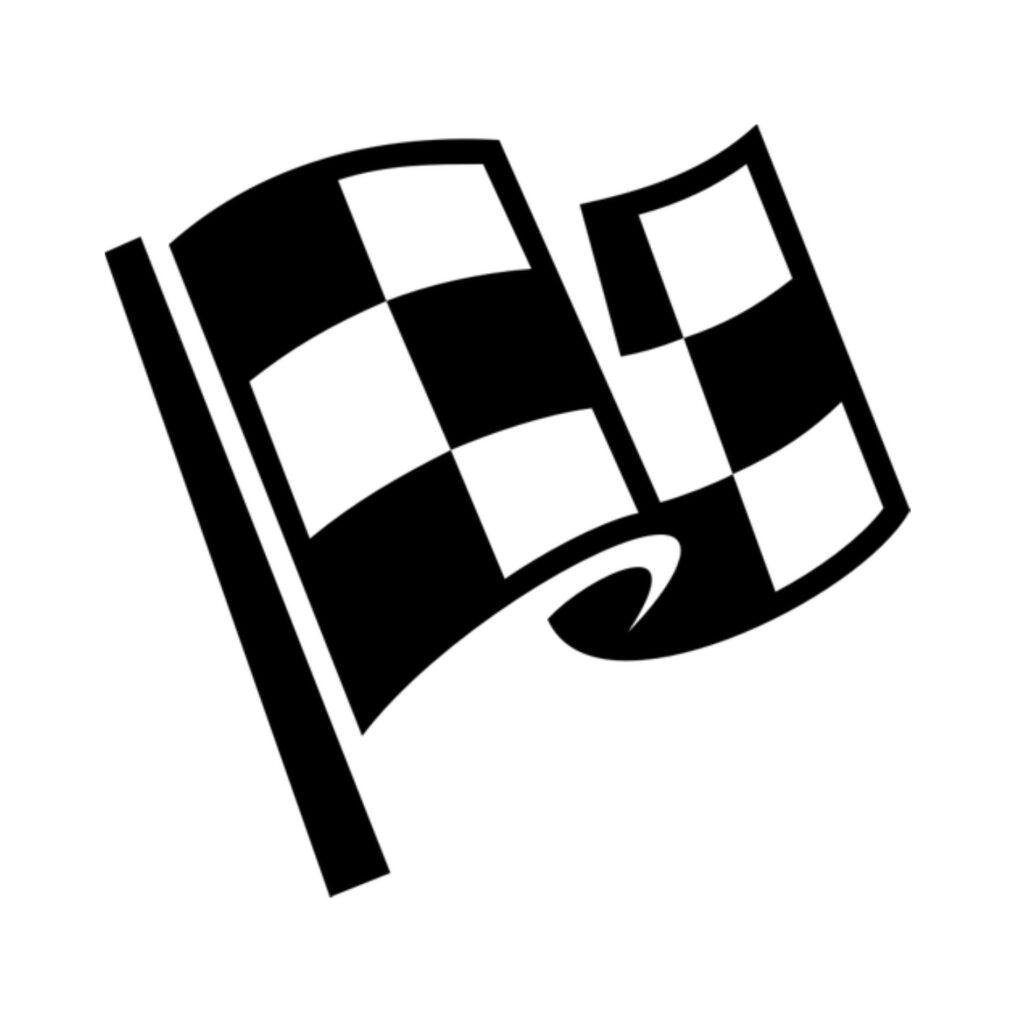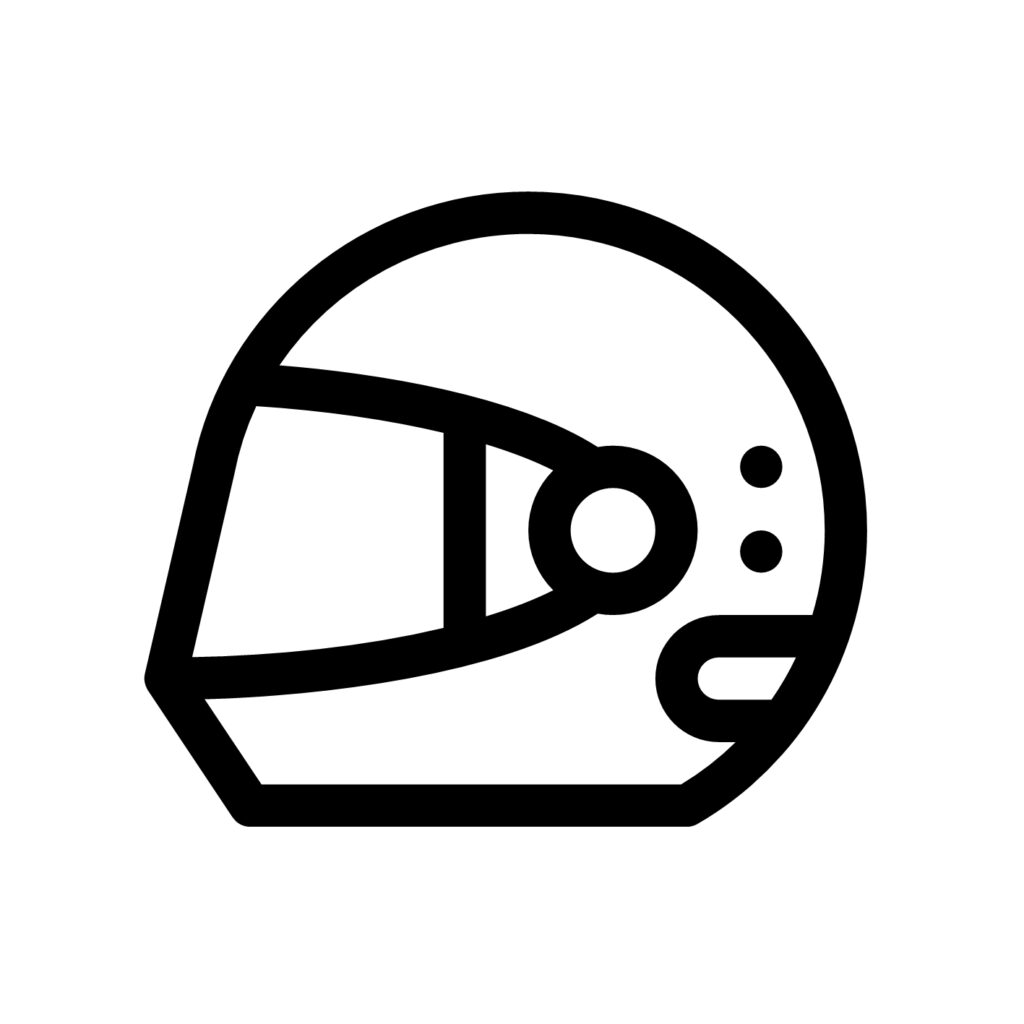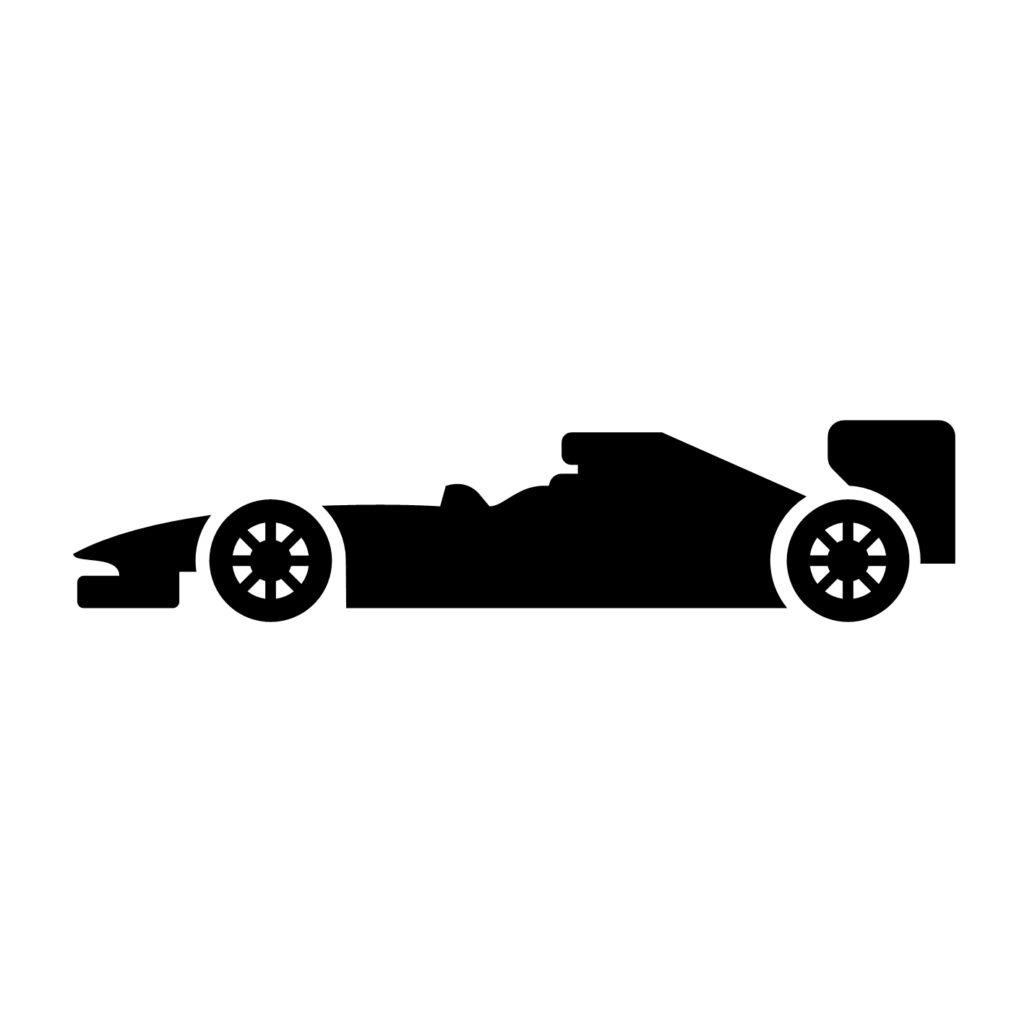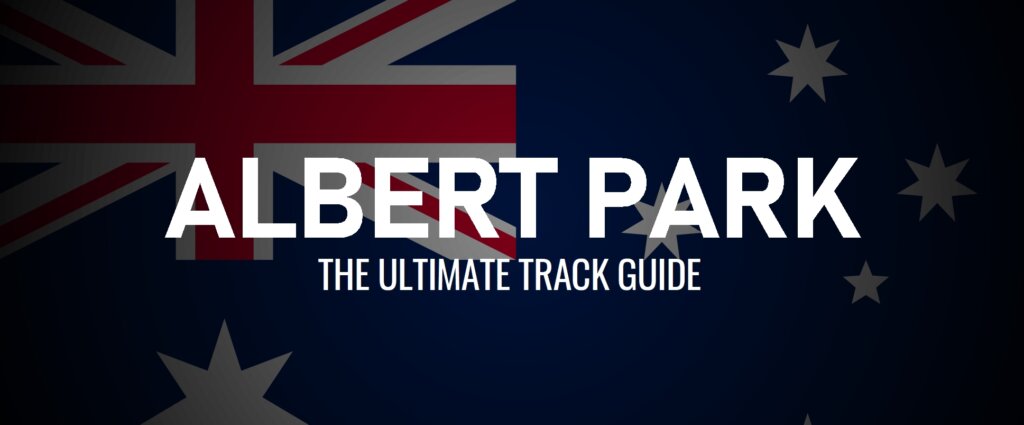
Albert Park, located just a few miles south of central Melbourne, has been host of the Australian Grand Prix since it moved from Adelaide in 1996. The temporary street circuit sees the cars tear through the park, just inches from the surrounding walls.
FIRST F1 RACE | 1996 |
TRACK LENGTH | 3.295 miles |
NUMBER OF LAPS | 58 |
NUMBER OF TURNS | 16 |
MOST POLES | Lewis Hamilton (8) |
MOST WINS | Michael Schumacher (4) |
The Australian Grand Prix was an event for many years before it became a part of the F1 World Championship. This event moved around tracks in Australia on a yearly basis. One non-championship Grand Prix with F1 machinery was held at Albert Park in 1956, albeit on a very different track to the current layout. The 1956 event was won by Stirling Moss, driving for Maserati.
The Australian Grand Prix became a fixture on the F1 calendar in 1985, at Adelaide. The race was run successfully there for eleven seasons. In 1993, negotiations began to bring the Australian Grand Prix to Melbourne and, after two years of preparations, Formula 1 took to the streets of a rebuilt Albert Park circuit for the first time for the first race of the 1996 season, much to the dismay of the ‘Save Albert Park’ group. The building of the circuit, even though temporary, required trees to be cut down and some facilities to be removed from the park.
The deal was struck mostly thanks to Ron Walker, an Australian business man who held negotiations with Bernie Ecclestone. Following Walker’s death in January 2018, the main straight on the track was renamed the ‘Walker Straight’ in honour of the man who helped to bring the event to the city.
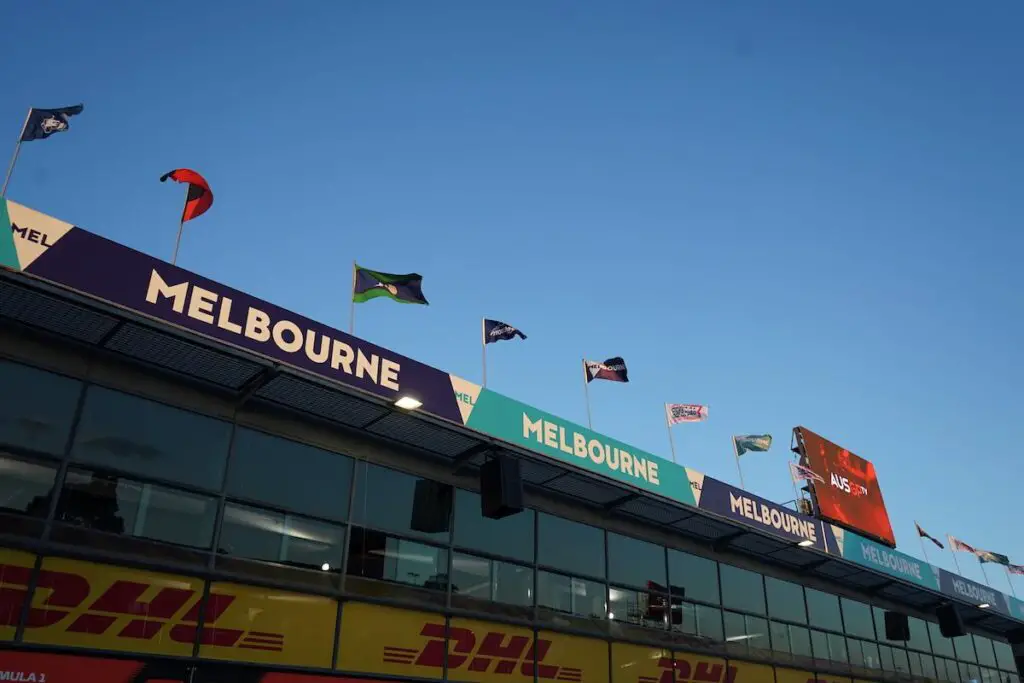
The Albert Park track is set around the man-altered lake, which is the centrepiece of the park. The track has been a favourite among fans for a long time, though opinion in recent years has shifted. While the track used to always promises an eventful opening round to a new season of Formula 1, events in recent years have been somewhat processional. The circuit is essentially a street track, but is not as restrictive as Monaco, allowing for plenty of overtaking.
The Grand Prix is well attended, with Albert Park’s weekend attendance figure reaching a new record high of 420,000 in 2022. Grandstands and corners are named after legendary Australian mostorsport figures such as Alan Jones, Jack Brabham and Mark Webber. A grandstand at Albert Park was renamed in 2016 in honour of Daniel Ricciardo. Though corner names are rarely used here, the last four corners at Albert Park – Ascari, Stewart, Senna and Prost – are named after former F1 champions.
Albert Park was due to celebrate its 25th Formula 1 race in 2020, but the event was cancelled just hours before the scheduled start of Free Practice 1. Public health concerns due to the coronavirus pandemic saw the event called off. Prior to the cancellation of the event, McLaren announced their withdrawal from the race due to a team member testing positive for the virus. The start of the 2020 season was ultimately delayed by almost four months, and began in Austria in July.
The Albert Park track already held a contract to host the Australian Grand Prix until 2023 and this was extended in July 2019. A further contract extension was signed in June 2022, keeping Albert Park on the calendar until at least 2035. That deal was then extended by a further two years later in the year. The circuit was redesigned ahead of the 2022 race, with new sweeping bends aimed at making more overtaking opportunities.
In 2025 – for the first time since 2019 – the Australian Grand Prix will be the opening round of the season.
LEARN MORE ABOUT ALBERT PARK
ALBERT PARK: FAST FACTS
- It takes around four weeks for Albert Park to get ready for Formula 1’s annual visit. The tyre barriers, fencing and grandstands are all put up in this time as the park prepares for the pinnacle of motorsport to descend on Melbourne. After the race, it takes two weeks for the park to revert to its normal functioning.
- The 1996 Australian Grand Prix followed on immediately from the 1995 Australian Grand Prix. The 1995 event had been at the end of the season, at Adelaide, and the 1996 Australian Grand Prix was the season opener – the first to be held in Melbourne. Until 2020, this was the last time that two successive F1 races had been held in the same country.
- Making his Formula 1 debut, Mark Webber finished fifth in his home Grand Prix for Minardi in 2002. He and team owner Paul Stoddart took to the podium after the official procedures to celebrate his achievement with the Australian crowd.
- The longest straight here is 860 metres long.
- Formula 1, and its support races, are the only events this track is used for all year, meaning that despite the roads being used year round by the public, the track is often dusty and offers low grip at the start of the weekend.
- Over 70% of a lap at Albert Park is spent at full throttle.
- The original Albert Park track used in the 1950s was run anti-clockwise.
- There has never been a night race here, but the 2009 event began at 5pm as the sun was setting. The race has never been run as late again due to visibility concerns.
- Turn 3 has seen notably large accidents over the years. In 1996, Martin Brundle flipped his car by driving into the back of David Coulthard’s McLaren. Similarly in 2016, Fernando Alonso suffered a violent crash when he misjudged the braking point and clattered into the back of Esteban Guiterrez’s Haas car. In 2001, Graham Beveridge, a marshal, was killed by a flying tyre from Jacques Villeneuve’s car.
- Over the course of the Australian Grand Prix, the drivers will make around 3,190 gear changes.
2024 AUSTRALIAN GRAND PRIX RECAP
Sainz became the first driver other than Verstappen to bring home a win in the 2024 season at the Australian Grand Prix.
The Williams team stole the headlines on the opening day of the 2024 Australian Grand Prix. A heavy crash for Alex Albon wrote off his Williams car and with the team having no spare chassis, Logan Sargeant was forced to hand his car over to his team-mate for the remainder of the weekend.
Ferrari’s Charles Leclerc was fastest in the final two practice sessions but it was Max Verstappen who secured a third pole position in the first three races of the 2024 season. It was Leclerc’s Ferrari team-mate Carlos Sainz – returning to the cockpit after appendix surgery – who secured a front row starting slot alongside the Red Bull.
Verstappen held the lead at the start of Sunday’s Grand Prix but Sainz stole the lead on the second lap. By Lap 4, smoke was emitting from the rear of Verstappen’s car. He subsequently recorded his first retirement in two years, ending a nine-race winning streak. On Lap 17, Lewis Hamilton joined Verstappen on the sidelines with an engine failure.
Hamilton’s trackside stoppage led to a Virtual Safety Car period, prompting a well-timed pit stop for Fernando Alonso. Out front, Sainz led from team-mate Leclerc, with the McLarens of Oscar Piastri and Lando Norris following in third and fourth. The remaining Red Bull of Sergio Perez began to make progress, passing both George Russell and Alonso within a few laps to run fifth.
On Lap 29. Piastri pulled aside to let team-mate Norris – on fresher tyres – through. Later in the race, the Australian battled by Alonso to secure a fourth place finish; equalling the best result for an Australian on home soil in F1.
On the final lap, George Russell crashed out while in pursuit of Alonso’s Aston Martin. With his stricken car left in the middle of the track, the race ended under Virtual Safety Car conditions. Sainz led home a Ferrari 1-2, with Norris completing the podium.
2023 AUSTRALIAN GRAND PRIX RECAP
In a race strewn with Safety Car outings and red flag periods, Verstappen secured his first Albert Park victory – and Red Bull’s first Australian Grand Prix win since 2011.
While GPS issues and a red flag for a stoppage by Logan Sargeant curtailed running in Free Practice 1 at Albert Park, rain halfway through Free Practice 2 limited Friday running at Albert Park. There was a further red flag on Saturday morning due to debris from Nyck de Vries’ AlphaTauri.
Max Verstappen had been fastest in the final practice session and his pace converted into qualifying, with the Dutchman securing another pole position. Team-mate Sergio Perez had struggled with multiple trips across the run-off areas in Free Practice 3 and he did so again in qualifying, beaching himself in the gravel in Q1.
Front row starter George Russell clinched the lead from Verstappen at Turn 1 as team-mate Lewis Hamilton challenged the Red Bull into Turn 3, making it a Mercedes 1-2. Further back, Charles Leclerc spun out prompting the first Safety Car period of the race.
The race resumed without incident until Lap 7 when Alex Albon, who had been running in an impressive sixth place for Williams, crashed heavily into the barriers leaving gravel and debris across the track. Russell opted to pit under the Safety Car period – but the red flag was shown one lap later.
Russell’s pit stop left Hamilton at the front of the field when the race restarted. Hamilton stayed ahead of the chasing pack, though Verstappen was soon on his tail with DRS, making a move stick on Lap 12. Russell’s afternoon came to a disappointing end on Lap 18, with him pulling to the side with a smoking engine.
Perez’s comeback from his lowly starting place got underway with a number of bold moves in the midpack. Meanwhile, a wide moment for Verstappen at the penultimate corner cost the Red Bull driver time.
The yellow flags made a reappearance after Kevin Magnussen hit the wall on Lap 54, shedding a tyre carcass in the process. The red flag was shown shortly after, meaning the race was to restart again on Lap 57 for what was to be a two lap shootout.
Any hopes of a two lap shootout came to nothing at Turn 1, where chaos ensued. After a collision between rookies Logan Sargeant and Nyck de Vries at the opening corner, the two Alpine drivers collided through the next turn after Fernando Alonso was tipped into a spin by Carlos Sainz. The carnage resulted in an immediate red flag.
Positions were set back to how they had been before the previous restart and the race resumed for a single Safety Car-led lap, with the drivers unable to overtake during the rolling restart towards the chequered flag. Max Verstappen secured Red Bull’s first Australian Grand Prix win in 12 years, while Lewis Hamilton and Fernando Alonso completed the podium.
Carlos Sainz was disappointed to be demoted from fourth to 12th at the end of the race as a result of his collision with Alonso, while Oscar Piastri picked up the first points of his Formula 1 career on home soil with an eighth place finish.
2022 AUSTRALIAN GRAND PRIX RECAP
It was a near-perfect Australian Grand Prix weekend for Charles Leclerc, who secured the first Grand Slam of his career.
Formula 1 returned to Albert Park for the first time since 2019, with the 2022 Australian Grand Prix the first to take place on a revised layout of the Albert Park circuit. Sebastian Vettel returned after missing the first two races of the season with coronavirus. His antics at the end of Free Practice 1 made headlines, as he took a scooter ride back to the pit lane after his car broke down – for which he later picked up a fine. His weekend didn’t get much better on Saturday, with him crashing out in final practice along with Aston Martin team-mate Lance Stroll.
Vettel failed to make it out on track at the start of qualifying at Albert Park as his car could not be repaired in time but Aston Martin were successful in getting Stroll out on track. However, Stroll suffered another setback in Q1. The red flags were brought out after Nicholas Latifi collided with Stroll’s car. Ironically, the red flag period allowed extra time for Vettel to make an on-track appearance. A further red flag was called in Q3 as Fernando Alonso – who was on a fast lap – collided with the barriers.
The battle for pole was won by Charles Leclerc, who led the field into Turn 1 on Sunday. While it was plain sailing for Leclerc, team-mate Carlos Sainz had a difficult Saturday and qualified only ninth. The Spaniard was out on Lap 2 in the race, spinning out into the gravel. After a Safety Car period, there were further off track excursions for Vettel and Kevin Magnussen, though both were able to continue.
Vettel then went off again on Lap 23 and this time he was less lucky, bringing out another Safety Car as he retired from the race. At the restart, Max Verstappen attempted an overtake on the leading Ferrari, but Leclerc just stayed ahead. Verstappen’s race ended on Lap 39 as he pulled over to the side of the track with a fuel leak. That left Leclerc free to take victory by over 20 seconds from Sergio Perez.
Mercedes enjoyed a somewhat more competitive weekend than at the first two races of the year, with George Russell scoring his first podium result with the team and Lewis Hamilton finishing fourth. It was also a good weekend for McLaren – Lando Norris finished fifth, while home hero Daniel Ricciardo followed in sixth.
Alex Albon was one of the stars of the race. Opting for an alternate strategy, the Williams driver stayed out on hard tyres until the penultimate lap of the race. The bold strategy call allowed Albon to pick up his, and the team’s, first point of the season.
2019 AUSTRALIAN GRAND PRIX RECAP
Despite the pre-season hype for Ferrari domination, Lewis Hamilton clocked up an eighth Australian Grand Prix pole and Valtteri Bottas stormed to the first victory of the 2019 season.
For a sixth consecutive year, Lewis Hamilton took pole position for the Australian Grand Prix, while rookie Lando Norris impressed at Albert Park with a top ten grid slot for McLaren. It was Valtteri Bottas who led into the first corner however.
Further back, Daniel Ricciardo ran over his own front wing on the run to Turn 1, bringing a premature end to his Renault debut. It was Carlos Sainz who was the first retirement of the season, however, with his Renault engine giving up eleven laps into the proceedings.
There was a nightmare stop for Haas who, in a repeat of events twelve months previous, struggled to attach a wheel to Romain Grosjean’s car. The Frenchman later retired.
Back on track, Norris found a way past Antonio Giovinazzi after the Alfa Romeo driver had held the McLaren up for multiple laps. Max Verstappen similarly overtook Sebastian Vettel’s Ferrari, leaving the German open to attack from new team-mate Charles Leclerc; Ferrari eventually telling their new driver to maintain position.
A late race battle to set the fastest lap ensued, which Bottas eventually came out on top of on his way to a dominant victory. Team-mate Hamilton finished twenty seconds behind, while Max Verstappen guided Honda to their first podium finish since 2008 on their début outing with Red Bull.
2018 AUSTRALIAN GRAND PRIX RECAP
For a second year in succession, Sebastian Vettel took victory for Ferrari at the season-opening Grand Prix after a pit stop blunder for Mercedes.
The Albert Park weekend got off to a bad start for home favourite Daniel Ricciardo, who received a three-place grid penalty for failing to slow down for a Red Flag during Friday Practice. It was a relatively easy run to pole for Lewis Hamilton, as his Mercedes team-mate Valtteri Bottas crashed out in Q3 and started way down the order as a result.
Hamilton maintained his lead at the start, despite a challenge from Kimi Raikkonen. Max Verstappen had a scrappy race and spun after ten laps, losing positions at a critical moment. Haas were having a great afternoon, running in fourth and fifth, until pit stop problems saw both cars retire with wheelnut issues. Their retirements prompted a Virtual Safety Car, which the yet-to-pit Sebastian Vettel used to his advantage and emerged from his pit stop ahead of Hamilton.
Despite his best attempts, Hamilton could do nothing to stop Vettel taking the victory. Bottas, after his qualifying crash, could only recover to eighth place in the Grand Prix as fellow Finn Raikkonen completed the podium finishers.
ALBERT PARK WINNERS AND POLESITTERS
Year | Polesitter | Team on Pole | Winner | Winning Team |
|---|---|---|---|---|
1996 | Jacques Villeneuve | Williams | Damon Hill | Williams |
1997 | Jacques Villeneuve | Williams | David Coulthard | McLaren |
1998 | Mika Hakkinen | McLaren | Mika Hakkinen | McLaren |
1999 | Mika Hakkinen | McLaren | Eddie Irvine | Ferrari |
2000 | Mika Hakkinen | McLaren | Michael Schumacher | Ferrari |
2001 | Michael Schumacher | Ferrari | Michael Schumacher | Ferrari |
2002 | Rubens Barrichello | Ferrari | Michael Schumacher | Ferrari |
2003 | Michael Schumacher | Ferrari | David Coulthard | McLaren |
2004 | Michael Schumacher | Ferrari | Michael Schumacher | Ferrari |
2005 | Giancarlo Fisichella | Renault | Giancarlo Fisichella | Renault |
2006 | Jenson Button | Honda | Fernando Alonso | Renault |
2007 | Kimi Raikkonen | Ferrari | Kimi Räikkönen | Ferrari |
2008 | Lewis Hamilton | McLaren | Lewis Hamilton | McLaren |
2009 | Jenson Button | Brawn GP | Jenson Button | Brawn GP |
2010 | Sebastian Vettel | Red Bull | Jenson Button | McLaren |
2011 | Sebastian Vettel | Red Bull | Sebastian Vettel | Red Bull |
2012 | Lewis Hamilton | McLaren | Jenson Button | McLaren |
2013 | Sebastian Vettel | Red Bull | Kimi Räikkönen | Lotus |
2014 | Lewis Hamilton | Mercedes | Nico Rosberg | Mercedes |
2015 | Lewis Hamilton | Mercedes | Lewis Hamilton | Mercedes |
2016 | Lewis Hamilton | Mercedes | Nico Rosberg | Mercedes |
2017 | Lewis Hamilton | Mercedes | Sebastian Vettel | Ferrari |
2018 | Lewis Hamilton | Mercedes | Sebastian Vettel | Ferrari |
2019 | Lewis Hamilton | Mercedes | Valtteri Bottas | Mercedes |
2022 | Charles Leclerc | Ferrari | Charles Leclerc | Ferrari |
2023 | Max Verstappen | Red Bull | Max Verstappen | Red Bull |
2024 | Max Verstappen | Red Bull | Carlos Sainz | Ferrari |
2025 | Lando Norris | McLaren | Lando Norris | McLaren |

